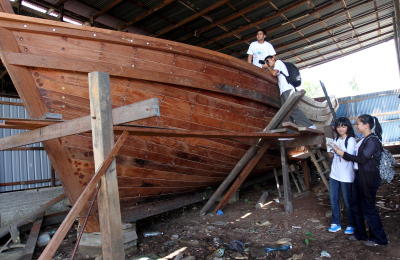SINCE he was 12, Asmawi Hasni’s hobby has been building boats. And we’re not talking about paper boats or model ships. We’re talking huge traditional wooden boats, some close to 20 feet tall and 100 feet long.
Traditional Malay boats might sound boring to most young people now, but for Asmawi, they quickly became his life’s passion.
Ever since his youth, Asmawi and his father Hasni Ali have been fighting to preserve the proud tradition of the Pulau Duyung boat makers.
Asmawi is the only one in his family carrying on the tradition into its fourth generation, even though he has four other siblings.
“Making a traditional boat is never as easy as it seems,” he said. A proper one is built without any nails or even blueprints. Almost everything is done by hand, apart from the odd power tool.
“It takes patience, precision and meticulousness. It is a very delicate job, and one small mistake can cause the boat to be unsuitable for voyage.”
Visitors to Pulau Duyung, a small island located just outside Kuala Terengganu town, are free to walk through the workshops where the boats are being built. Most of these ships are commissioned by foreign boat enthusiasts, many of whom are astounded by the builders’ craftsmanship.
But the occasional order from overseas won’t be enough to sustain the industry, as Asmawi said the price of good cengal wood – favoured by traditional boat makers for its durability – is going up.
Moreover, it takes around six months and several skilled workers to complete a simple fishing boat.
More worryingly for Asmawi is the lack of interest from local youngsters in the tradition.
“Many from the younger generation find it old-fashioned,” he said. “I fear that I could be the last boat-maker in my family.”


Tell us what you think!